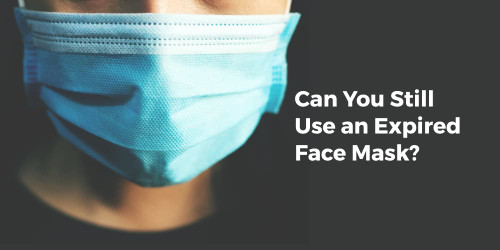Different Types of Wound Dressings – What’s Their Purpose?
Whether you cut your finger while cooking or graze your knee playing a sport, it becomes a wound once your skin is broken. Grabbing a Band-Aid and sticking it over your damaged skin may be second nature. But here’s the thing- if the wound isn’t cleaned and cared for properly, it can lead to infection. This blog will give you tips and techniques for looking after surgical incisions, cuts, grazes, and abrasions.
What is a wound dressing?
Wound treatment and wound dressing depend on several factors, including skin type, wound location, and the severity of the wound. The objective of wound dressing is to:
- Apply compression to reduce blood flow
- Reduce pain
- Immobilise the injured body part
- Protect the wound, and surrounding tissue
- Promote the wound healing process.
If you have a severe injury involving a wound or something embedded in it, it’s essential to head to an emergency department or a medical clinic.
Before you dress a wound at home, it’s essential to clean it using the following steps:
- Wash your hands and dry them thoroughly
- Rinse the wound under running tap water for 5 to 10 minutes
- Soak a gauze pad or swab in tap water, an alcohol-free wipe, or saline solution. Avoid using antiseptic as this could damage the skin.
- Gently pat the wound dry using a clean towel or tissues. Avoid using fluffy materials like cotton wool balls, as they can get stuck to the wound
Apply a sterile wound dressing. The type of wound dressing you choose will impact how effectively and fast your wounds heal.
Things to consider when choosing the right wound dressing?
Not all wound dressings are the same. They may look similar, but some wound dressings have different uses to others. Consider the following when choosing the right wound dressing to get the best clinical outcomes.
- How will the wound be cleansed when the wound dressing is changed? Saline solution is a clear, colourless solution that effectively cleans cuts and wounds.
- Will the wound dressing suit the type of wound? Choose wound dressings that are easy to apply and remove. It’s also essential they conform to the body. For example, a wound dressing on your heel will be different from one on your leg.
- How much is the wound draining? Choose a wound dressing that will absorb the wound's amount of drainage.
- How large is the wound? Measure the wound’s length, width, and depth in centimetres. To protect the skin around your wound, choose a wound dressing that’s slightly larger than the wound.
- How often should the wound dressing be changed? Your wound will heal faster if the wound bed is covered. It’s essential to change your wound dressing daily for hygienic reasons. If your wound isn’t healing, seek medical attention.
Different types of wound dressings?
With so many wound dressing types available, it can be hard to determine which dressing is appropriate for different wounds. Here’s some information about the different types of dressings and when you should use them.
Non-adherent dressings
Non-adherent wound dressings are low adherent wound pads that allow pain-free wound dressing removal. They're primarily used for minor wounds and to protect the fragile tissue in wounds to minimise trauma when the wound dressing is removed or needs changing. Non-adherent dressings are best used for scabbed or draining wounds, first and second-degree burns and skin tears. They’re also used for sensitive and fragile skin, including people with leg ulcers.
Waterproof Dressings
Waterproof dressings offer a transparent, waterproof film layer that serves as a bacterial barrier. With hypoallergenic adhesive, waterproof bandages feature a low irritation risk. They’re suitable for covering sutures, cuts, and grazes.
Some waterproof dressings have a transparent film, making it easy to check for signs of infection without removing the dressing. It’s important to note that these aren’t suitable for infected wounds.
Non-woven combine dressings
Non-woven combine dressings are made from a highly absorbent inner enclosed in a soft and comfortable non-woven covering fabric. These wound dressings are ideal for use as a primary or secondary dressing. They’re also practical for moderating wounds that are exudating (where fluid leaks out of blood vessels into nearby tissues).
Gauze dressings
Gauze dressings are crafted from thick, highly absorbent cotton pads attached to a cotton gauze bandage. This type of dressing protects wounds from infection while controlling wound oozing.
Elastic crepe bandage
Elastic crepe bandages are crafted from polyurethane fibres (spandex) and cotton, creating exceptional stretch and memory. This type of wound dressing is comfortable to wear and helps to reduce swelling. As a non-sterile wound dressing, elastic crepe bandages are suitable for sprains and strains, support bandaging and first aid.
Heavy crepe bandage
Heavy crepe bandages are polyurethane fibres (spandex) and cotton blends. With excellent stretch and memory, this non-sterile wound dressing type:
- It is comfortable to wear
- Immobilises an injury to help prevent further pain and injury
- It is suitable for first aid, joint injuries, ligament injuries and fractures
Hydrocolloid dressing
Hydrocolloid dressings have two layers. The inner, hydrocolloid adhesive layer has particles that absorb exudate to form a hydrated gel over the wound, creating a moist environment that promotes healing and protects new tissue. Hydrocolloid dressings are designed to be worn for up to a week. Infrequent dressing changes are less disruptive to the wound bed, provided that healthy skin is not compromised.
Foam dressing
Foam dressings are nonlinting and absorbent. They vary in thickness and have a nonadherent layer, allowing nontraumatic removal. Some have an adhesive border and may have a film coating as an additional bacteria barrier. Foam dressings provide a moist environment and thermal insulation. Foam dressings may be used as primary and secondary dressings for partial- and full-thickness wounds with minimal, moderate, or heavy drainage; as primary dressings to provide absorption and insulation; or as secondary dressings for wounds with packing.
Alginate dressing
Alginate dressings are light, nonwoven fabrics derived from algae or seaweed. 13. Designed for moderately to heavily exudating wounds, they are highly absorbent, have mild hemostatic properties, reduce bacterial infections, and can stay on the wound bed for days. Alginate dressings tend to fall apart faster than other dressings, which may present a significant limitation in use for primary HS lesions, as parts of the dressing may lodge in sinuses. Use of a contact layer as a primary dressing may improve the overall performance of an alginate dressing.
Hydrogel dressing
Hydrogel dressings are in many respects ideal for wound dressings. When applied to dry wounds, as well as sloughing or necrotic wounds, they can make and keep them clean by promoting the removal of infected or necrotic tissue via autolysis. Hydrogel dressings keep the wound warm, moist, and close. Also, they do not react with or irritate tissue. When applied, they do not adhere to wound surfaces and allow metabolites to pass freely. These dressings help provide a cooling effect on the wound, which makes them very pleasant for patients.
Collagen dressing
Collagen dressings have other advantages over conventional dressings in terms of ease of application and being natural, non-immunogenic, non-pyrogenic, hypo-allergenic, and pain-free. Biological dressings like collagen are impermeable to bacteria, and create the most physiological interface between the wound surface and the environment.
Collagen dressings may be used as primary dressing for partial- and full-thickness wounds, regardless of whether they are infected. With the use of collagen, a secondary dressing needs to be applied to absorb exudate. Collagen dressing products are available as sheets, pads, particles, and gels.
| Table 1. Wound categories with recommended dressings | ||
| Wound type | Dressings recommended | Special comments |
| Skin tears |
Apply silicone-covered foam dressing directly over the wound.
If bleeding, apply haemostatic alginate dressing as primary dressing under a silicone-coated foam dressing. |
Do not use any adhesive products on fragile skin as they may contribute to further skin tears, especially on forearms and hands of the elderly.
Using a barrier wipe under the foam aids to secure application, reduce maceration and protect the skin on removal of the dressing. Remover wipes should also be used when removing a dressing from fragile skin. Removal of the dressing should be done in a direction that does not disturb viable tissue edges and flaps. |
| Minor cut/laceration | Cover with a low-absorbent dressing that prevents further trauma and absorbs exudate (dry island dressing). | Check for diabetes and the presence of at least two signs or symptoms of inflammation (redness, warmth, induration, pain/tenderness) or purulent secretions indicating infection. 25 |
| Postoperative wounds |
For wounds without exudate, dress over sutures with a film or thin hydrocolloid.
For wounds with exudate, apply a bordered low‑absorbent dressing (dry island dressing). |
In case of wound dehiscence, organise prompt surgical review. |
| Small superficial burns | After initial first aid treatment, cover burns area with hydrogel or hydrocolloid or film. | Refer to burns specialist for burns that are deep or infected or located on hands, feet, face or genitalia. |
| Diabetic foot |
Apply a primary antimicrobial dressing product with secondary dressing according to exudate:
|
Check pedal pulses and sensation; if there is poor perfusion, referral to a diabetic foot clinic or vascular surgeon is recommended.
Silicone foams on feet, if applied, should be without borders and anchored with tape or bandages. |
| Table 2. Dressing types | |||
| Dressing class (generic) | Purpose/action | Limitations and cautions | Wear time |
| Films | Permeable to gas but impermeable to bacteria and liquid. Useful on superficial wounds with minimum exudate. | May be traumatic on removal. | 1–4 days |
| Foam | Suitable for moderately exudating wounds, skin tears, skin grafts and donor sites. | Nonsilicone types should be avoided in patients with fragile skin. | Up to seven days |
| Low adherence, low-absorbent dressing |
Passive breathable dressing for low-exudating wounds.
Protection over sutures or shallow wounds. |
Not suitable for fragile papery skin as adhesive border can cause skin tear on removal. Not showerproof. Require secondary dressings for absorbing exudate – added cost. | 1–4 days |
| Hydrocolloid | The sheet form of the dressing is self-adhesive and waterproof, and it does not need a secondary dressing, which makes this dressing type easy to use. | Low absorbency, produce unpleasant odour during removal. | Up to seven days |
| Alginate | Promotes haemostasis in actively bleeding wounds, used in moderate-to-high-exudating wounds, wicks away fluid from the wound, can be used in packing wounds. Available in sheets or ropes. | Will dry firm within 48 hours; may need to be soaked off to remove. Allergic reaction has been reported. | Up to two days |
| Antimicrobial | The clinical evidence supporting the routine use of antimicrobial dressings is weak. | Bacterial resistance with long-term use. High cost of silver-impregnated dressings. | 1–4 days |
Table taken from Australian Journal of General Practice on Selecting Appropriate Dressings Volume 51, Issue 11
The best wound dressing for an open wound
An open wound leaves the tissues of your body exposed to the external environment. This can increase the risk of bacterial infection. While open wounds may not need medical treatment, it’s essential to keep the wound clean and protected with a wound dressing.
So, what is the best dressing for an open wound? Waterproof dressings, gauze dressings, and elastic crepe bandages can be used to protect the open wound.
Where to get the best wound dressings in Australia
Knowing which wound dressings to use for your wound is as essential as allowing it time to heal. For the best range of wound dressings in Australia, our online store offers hundreds of wound care and dressing options, including:
- Non-adherent dressings
- Waterproof dressings
- Non-woven combine dressings
- Gauze dressings
- Elastic crepe bandage
- Heavy crepe bandage















